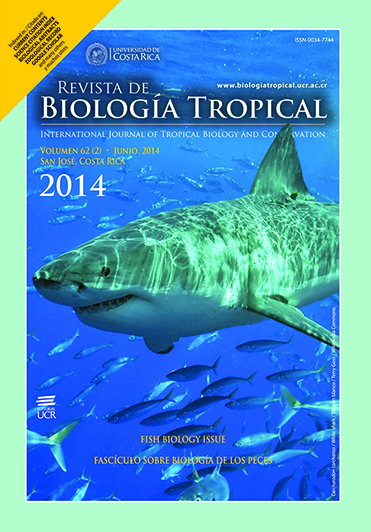Abstract
The main threats to natural populations in terrestrial ecosystems have been widly recognized to be the habitat fragmentation and the exploitation of forest products. In this study, we compared the density of the populations and the structure of three tropical palm species, Astrocaryum aculeatissimum, Euterpe edulis and Geonoma schottiana. For this, we selected five forest fragments of different sizes (3 500ha, 2 400ha, 57ha, 21ha and 19ha) where palms were censused in nine 30x30m plots. We tracked the palms survival from 2005 to 2007, and recorded all new individuals encountered. Each individual was assigned in one of the five ontogenetic stages: seedling, infant, juvenile, immature and reproductive. The demographic structure of each palm species was analyzed and compared by a generalized linear model (GLM). The analysis was performed per palm species. The forest fragment area and the year of observation were explanatory variables, and the proportion of individuals in each ontogenetic class and palm density were response variables. The total number of individuals (from seedlings to reproductives, of all species) monitored was 6 450 in 2005, 7 268 in 2006, and 8 664 in 2007. The densities of two palm species were not influenced by the size of the fragment, but the population density of A. aculeatissimum was dependent on the size of the fragment: there were more individuals in the bigger s than in the smaller forest fragments. The population structure of A. aculeatissimum, E. edulis, and G. schottiana was not altered in the smaller fragments, except the infants of G. schottiana. The main point to be drawn from the results found in this study is that the responses of density and population structure seem not to be dependent on fragment size, except for one species that resulted more abundant in bigger fragments.
##plugins.facebook.comentarios##

This work is licensed under a Creative Commons Attribution 4.0 International License.
Copyright (c) 2014 Revista de Biología Tropical






